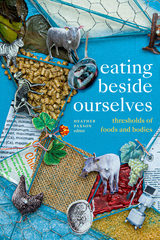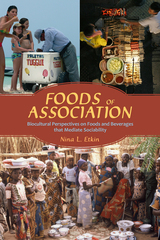
The medicinal properties of plants have been of interest to society for centuries and continue to be a subject of modern research. Yet too often research has been predicated upon poorly identified plant material and secondary sources of information. Much of what we know about the use of plants as drugs, poisons, foods, and as instruments of magical or religious practice derives from lore inherited from the clay tablets and papyri of the ancients and from compilations of early Greek, Arabic, and Indian physicians. Meanwhile, information pertaining to plant parts used even now in the daily life of peoples far removed from the influence of modern medical and health practices has been largely overlooked.
With the encroachment of civilized cultures on primitive societies, unique traditions—often unwritten—are being destroyed. In many instances, the very plants involved are disappearing. Not infrequently, the only record, where one exists at all, of these vanishing pools of knowledge is that of the botanical field worker. For no matter what chemical or biological investigations may follow, the botanist can affix to an actual specimen, as he collects it in the field, the local terms applied to the plant and a description of native medicinal or other uses.
Dr. Altschul has compiled field notes of health and medical interest on over 5,000 species of plants, culled from some 2,500,000 specimens of higher plants collected by field botanists from all over the world and deposited in the combined collections of the Arnold Arboretum and Gray Herbarium of Harvard University. The resulting catalogue represents a unique approach to supplying new investigational leads to researchers seeking biologically active plant principles. Dr. Altschul's meticulous sheet&ndashby–sheet examination of the Harvard collections provides the pharmacognosist, pharmacologist, and others in the medical and health sciences with an extensive firsthand survey of the domestic medicines of many cultures.
These previously unpublished botanists' notes are here made available in a comprehensive publication that should become an important resource for every investigation into the area of medicinal phytochemistry. Indexes to families and genera are provided, as well as a medical index referring to diseases and to therapeutic properties for researchers intent on locating plants with special medicinal capacities. The author is a Research Fellow at the Botanical Museum of Harvard University.

Contributors. Alex Blanchette, Deborah Heath, Hannah Landecker, Marianne Elisabeth Lien, Amy Moran-Thomas, Heather Paxson, Harris Solomon, Emily Yates-Doerr, Wim Van Daele

This fascinating book examines the biology and culture of foods and beverages that are consumed in communal settings, with special attention to their health implications. Nina Etkin covers a wealth of topics, exploring human evolutionary history, the Slow Food movement, ritual and ceremonial foods, caffeinated beverages, spices, the street foods of Hawaii and northern Nigeria, and even bottled water. Her work is framed by a biocultural perspective that considers both the physiological implications of consumption and the cultural construction and circulation of foods. For Etkin, the foods and beverages we consume are simultaneously “biodynamic substances and cultural objects.”
The book begins with a look at the social eating habits of our primate relatives and discusses our evolutionary adaptations. It then offers a history of social foods in the era of European expansion, with a focus on spices and “caffeinated cordials.” (Of course, there were some powerful physiological consequences of eating foods brought home by returning explorers, and those are considered too—along with consequences for native peoples.) From there, the book describes “street food,” which is always served in communal settings. Etkin then scrutinizes ceremonial foods and beverages, and considers their pharmacological effects as well. Her extensive examination concludes by assessing the biological and cultural implications of bottled water.
While intended primarily for scholars, this enticing book serves up a tantalizing smorgasbord of food for thought.

This companion volume to Siri von Reis's previous exploration of ethnobotanical notes in the Harvard herbaria brings to light a new array of plants with drug or food potential, offering wide-ranging possible applications for pharmacologists, chemists, botanists, and even anthropologists. Following the same criteria as in earlier investigations, the authors have examined the vast holdings of The New York Botanical Garden Herbarium to select little-known plant uses and to record any note suggesting biodynamic constituents--i.e., those having effects on living tissue--from skin irritants and poisons and medications of any kind to foods, beverages, and spices. They have also included species whose applications suggest other kinds of unreported chemical activity, plants associated with magic or ritual which affected people in some unusual way.
Listing the notes in the order in which the species were found in the collection, family by family, the authors call attention to similar characteristics in related species and families having biodvnamic properties in common. Each entry begins with the Latin name of the specimen, cites the country in which it was collected, the collector's name, and his held number for the plant, and then quotes the ethnobotanical or other note of interest.
While in itself a valuable reference work in the search for clues to useful plants, New Plant Source for Drugs and Foods also will enhance the value of the first volume by allowing a comparison of entries.
READERS
Browse our collection.
PUBLISHERS
See BiblioVault's publisher services.
STUDENT SERVICES
Files for college accessibility offices.
UChicago Accessibility Resources
home | accessibility | search | about | contact us
BiblioVault ® 2001 - 2024
The University of Chicago Press









